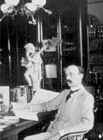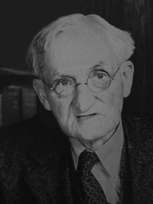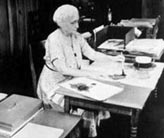![]()
![]()
An Herbarium Collection is one of the most valuable assets a plant biologist may have. Pressed and preserved plant materials provide morphological, chemical, and ecological data for many types of research. Without herbaria, it would be impossible to see specimens from certain regions of the world. When a plant is preserved in a collection, it becomes available to study for many years. Such collections are invaluable to the scientific community, but despite their value, may remain undiscovered or underused.
The Cornell University Bryophyte Collection is an underused collection. With over 63,000 specimens, the collection has much to offer. An interesting history surrounds the collection, and it has particularly strong holdings of certain bryophyte groups and various geographical regions. Additionally, the bryophyte specimens are complemented by the exquisite original moss illustrations of Georg Roth.
Welcome, and enjoy your stay.
The Cornell University Bryophyte Collection began with the purchase of Horace Mann Jr.'s personal herbarium of ca. 15,000 specimens by Andrew Dickson White, Cornell's first President. Shortly after, Cornell naturalists began to collect all types of biotic specimens in order to document the natural history of the Ithaca area. Of course, this included algae, mosses, liverworts, lichens, and fungi. George F. Atkinson, an early professor of botany, was a cryptogamist who focused mostly on Basidiomycetes, but he also collected many mosses during his career. Another contributor was Stewart H. Burnham, who actively collected mosses and liverworts in eastern New York, particularly around Lake George, from the 1890s to ca. 1920. He later published a list of bryophytes as part of his general documentation of that region's flora. Burnham worked as Assistant State Botanist with Charles H. Peck at the New York State Museum in Albany from 1905 to 1913. Peck was a pioneer student of bryology in the United States, and Burnham gained invaluable experience while working with him. Burnham was later appointed Assistant Curator of the Cornell Herbarium in 1922, and processed his own collection of 75,000 plant specimens. These were eventually donated to the Cornell Herbarium, and included hundreds of bryophytes. A. LeRoy Andrews, a Cornell professor of Germanic languages in the College of Arts and Sciences, was an avocational bryologist who became well known in the scientific community. As an adjunct to his studies, he amassed a collection of over 50,000 mosses and hepatics, and published a flora of Cayuga Lake Basin bryophytes. He was Honorary Curator of Bryophytes at the Wiegand Herbarium, and in retirement worked with Adelaide Elizabeth Briggs, Assistant Curator, who would process and accession his vast collection after his death. This effort was left unfinished in 1980 when Briggs retired. The remaining specimens were processed in March 1998.
These historical notes relate to the Wiegand (Cornell) section of the Herbarium. Meanwhile, the Bailey Hortorium Herbarium had been growing in parallel since the late 1800's. This was a private herbarium, maintained by Liberty Hyde Bailey and his daughter Ethel Zoe Bailey. The emphasis was cultivated flora, with no direct acquisition of bryophytes; but, over the years they obtained ca. 8,000 bryophytes by exchange, and added them to their collection. One of the people with whom they exchanged was Elizabeth Britton of the New York Botanical Garden. The Bailey Hortorium bryophytes were interfiled within the Wiegand Herbarium moss collection in 1981.
 |
 |
 |
|
George Atkinson |
Stewart H. Burnham |
Charles H. Peck |
A. LeRoy Andrews |
 |
|
 |
 |
Liberty Hyde Bailey |
Elizabeth Britton |
Ethel Zoe Bailey |
Adelaide E. Briggs |
To access the Bryophyte Collection, please contact the Herbarium at: herbarium@cornell.edu For general information about Herbarium hours, location, and other special collections, please follow this link to the Herbarium homepage.
This section of the Bailey Hortorium Herbarium webpage was created in 1999 by Shawn Krosnick with imput from Robert Dirig, Assistant Curator.
|